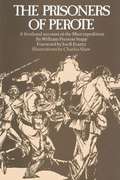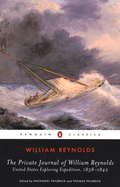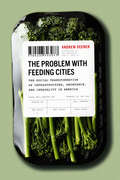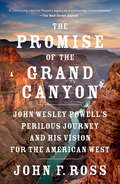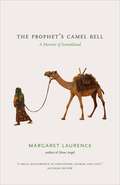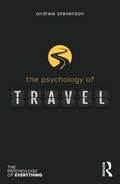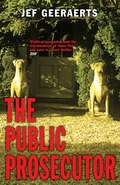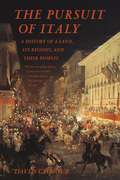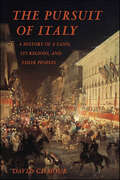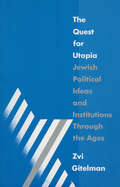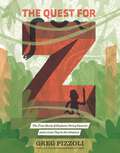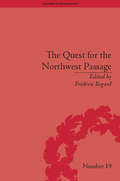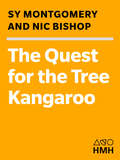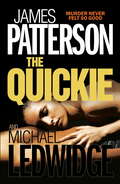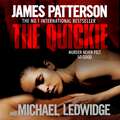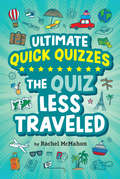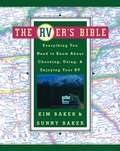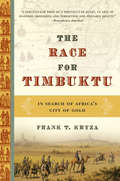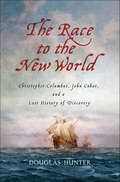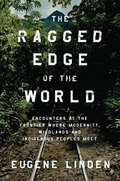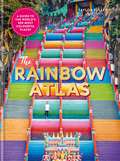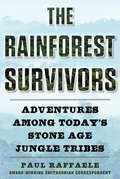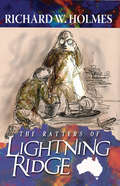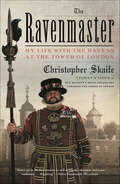- Table View
- List View
The Prisoners of Perote
by William Preston StappIn late 1842, Private William Preston Stapp and about three hundred other citizens of the Republic of Texas took it upon themselves to invade Mexico. They intended to retaliate for a recent Mexican attack on San Antonio and to humiliate President Sam Houston, who had been hesitant to seek revenge. Stapp provides a closely observed, day-by-day narrative of the disastrous adventure later known as the Mier expedition. While his style might be described as "elegantly restrained" in comparison to the literary excesses of that early Victorian age, Stapp''s flair for drama and description makes for colorful reading. In response to the public outrage prompted by the San Antonio incident, Houston issued a presidential proclamation inviting volunteers for a retaliatory expedition across the Rio Grande. After the bloodless "capture" and pillage of two Mexican border towns, he called the volunteers back home. Most were relieved to comply, but some felt compelled to pursue the honor of the Republic further, and the Mier expedition was launched on December 20, 1842. On the day after Christmas, all save a forty-man camp guard were captured outside of Mier, a few miles across the Mexican border. The prisoners faced a brutal forced march to Mexico City. Stapp was one of a large group that escaped along the way, became lost in the mountains, and suffered badly from hunger and thirst before recapture. He survived the notorious Black Bean Episode in which 17 of the 176 returned escapees were shot after drawing black beans in a lottery. The Texans were delivered to Perote Prison near Mexico City in September 1843, where a few of them tunneled to freedom and many more died in captivity. Mexico released the last of the prisoners in 1844, and Stapp was among them. First published in 1845 and later issued in pamphlet form in 1933 by the La Grange Journal, The Prisoners of Perote is a fascinating view of a painful episode in Texas history. The foreword by Joe B. Frantz provides a perspective on the Texas-Mexico relations during this period "when both countries were shaking down and had not yet found their way. " He points out that The Prisoners of Perote provides some clues to the reasons behind the inherent tenseness that exists between Texas and Mexico today. In late 1842, Private William Preston Stapp and about three hundred other citizens of the Republic of Texas took it upon themselves to invade Mexico. They intended to retaliate for a recent Mexican attack on San Antonio and to humiliate President Sam Houston, who had been hesitant to seek revenge. Stapp provides a closely observed, day-by-day narrative of the disastrous adventure later known as the Mier expedition. While his style might be described as "elegantly restrained" in comparison to the literary excesses of that early Victorian age, Stapp''s flair for drama and description makes for colorful reading. In response to the public outrage prompted by the San Antonio incident, Houston issued a presidential proclamation inviting volunteers for a retaliatory expedition across the Rio Grande. After the bloodless "capture" and pillage of two Mexican border towns, he called the volunteers back home. Most were relieved to comply, but some felt compelled to pursue the honor of the Republic further, and the Mier expedition was launched on December 20, 1842. On the day after Christmas, all save a forty-man camp guard were captured outside of Mier, a few miles across the Mexican border. The prisoners faced a brutal forced march to Mexico City. Stapp was one of a large group that escaped along the way, became lost in the mountains, and suffered badly from hunger and thirst before recapture. He survived the notorious Black Bean Episode in which 17 of the 176 returned escapees were shot after drawing black beans in a lottery. The Texans were delivered to Perote Prison near Mexico City in September 1843, where a few of them tunneled to freedom and many more died in captivity. Mexico released the last of the prisoners in 1844, and Stapp was among them. First published i...
The Private Journal of William Reynolds
by Nathaniel Philbrick Thomas Philbrick William ReynoldsOne of the finest nineteenth-century first-person narratives of a sea voyage in existence, and a principle source for Sea of Glory, The Private Journal of William Reynolds brings to life the boisterous world traversed by the six vessels that comprised America's first ocean-going voyage of discovery, the U. S. Exploring Expedition of 1838-1842. With great eloquence and verve Midshipman William Reynolds describes the harrowing 87,000-mile, four-year circuit of the globe, and relates the story of how the abusive commander of the Ex. Ex. , Lieutenant Charles Wilkes, gradually lost the support of his crew. With a seaman's understanding and an artist's appreciation for the wild beauty that surrounds him, the Journal is a tour de force combining meticulous observations with a young man's sense of wonder and, on occasion, terror as he is tossed about by the tremendous seas. .
The Problem with Feeding Cities: The Social Transformation of Infrastructure, Abundance, and Inequality in America
by Andrew DeenerFor most people, grocery shopping is a mundane activity. Few stop to think about the massive, global infrastructure that makes it possible to buy Chilean grapes in a Philadelphia supermarket in the middle of winter. Yet every piece of food represents an interlocking system of agriculture, manufacturing, shipping, logistics, retailing, and nonprofits that controls what we eat—or don’t.The Problem with Feeding Cities is a sociological and historical examination of how this remarkable network of abundance and convenience came into being over the last century. It looks at how the US food system transformed from feeding communities to feeding the entire nation, and it reveals how a process that was once about fulfilling basic needs became focused on satisfying profit margins. It is also a story of how this system fails to feed people, especially in the creation of food deserts. Andrew Deener shows that problems with food access are the result of infrastructural failings stemming from how markets and cities were developed, how distribution systems were built, and how organizations coordinate the quality and movement of food. He profiles hundreds of people connected through the food chain, from farmers, wholesalers, and supermarket executives, to global shippers, logistics experts, and cold-storage operators, to food bank employees and public health advocates. It is a book that will change the way we see our grocery store trips and will encourage us all to rethink the way we eat in this country.
The Promise of the Grand Canyon: John Wesley Powell's Perilous Journey and His Vision for the American West
by John F. RossA timely, thrilling account of a man who, as an explorer, dared to lead the first successful expedition down the Colorado through the Grand Canyon--and, as an American visionary, waged a bitterly-contested campaign for environmental sustainability in the American West.When John Wesley Powell became the first person to navigate the entire Colorado River, through the Grand Canyon, he completed what Lewis and Clark had begun nearly 70 years earlier--the final exploration of continental America. The son of an abolitionist preacher, a Civil War hero (who lost an arm at Shiloh), and a passionate naturalist and geologist, in 1869 Powell tackled the vast and dangerous gorge carved by the Colorado River and known today (thanks to Powell) as the Grand Canyon. With The Promise of the Grand Canyon, John Ross recreates Powell's expedition in all its glory and terror, but his second (unheralded) career as a scientist, bureaucrat, and land-management pioneer concerns us today. Powell was the first to ask: how should the development of the west be shaped? How much could the land support? What was the role of the government and private industry in all of this? He began a national conversation about sustainable development when most everyone else still looked upon land as an inexhaustible resource. Though he supported irrigation and dams, his prescient warnings forecast the 1930s dustbowl and the growing water scarcities of today. Practical, yet visionary, Powell didn't have all the answers, but was first to ask the right questions.
The Prophet's Camel Bell: A Memoir of Somaliland
by Margaret LaurenceIn 1950, as a young bride, Margaret Laurence set out with her engineer husband to what was then Somaliland: a British protectorate in North Africa few Canadians had ever heard of. Her account of this voyage into the desert is full of wit and astonishment. Laurence honestly portrays the difficulty of colonial relationships and the frustration of trying to get along with Somalis who had no reason to trust outsiders. There are moments of surprise and discovery when Laurence exclaims at the beauty of a flock of birds only to discover that they are locusts, or offers medical help to impoverished neighbors only to be confronted with how little she can help them. During her stay, Laurence moves past misunderstanding the Somalis and comes to admire memorable individuals: a storyteller, a poet, a camel-herder. The Prophet's Camel Bell is both a fascinating account of Somali culture and British colonial characters, and a lyrical description of life in the desert. "The Prophet's Camel Bell has a timeless feeling about it that sets the work quite apart from the usual books of travel and adventure in distant and exotic parts. "--Canadian Literature
The Psychology of Travel (The Psychology of Everything)
by Andrew StevensonWhy do we travel? Are holidays good for our health? What are the social and psychological factors that drive us to move? The Psychology of Travel provides an eclectic introduction to the range of travel experiences from commuting, to going on holiday, to studying abroad. Travel is a near-universal experience and manifests itself in various forms, from everyday experiences to exotic adventure, although it varies across time and cultures. The book unpacks the concept of travel, and engages with topics including migration, wellbeing, acculturation, wayfinding, slow travel, place attachment and nostalgia, and brings them into sharp focus in relation to globalisation and climate change, By asking what drives us to journey and offering key insights into the psychological factors behind different kinds of travel, The Psychology of Travel introduces the reader to new ways of thinking about global mobility and movement.
The Public Prosecutor
by Brian Doyle Jef GeeraertsAlbert Savelkoul, Public Prosecutor of Antwerp has power, money, an aristocratic wife and a high-maintenance mistress. A wonderful life-until Opus Dei takes a less than benevolent interest in it. So starts a harrowing yet humorous tale of blackmail and murder.
The Pursuit Of Italy: A History Of A Land, Its Regions, And Their Peoples
by David GilmourA provocative, entertaining account of Italy's diverse riches, its hopes and dreams, its past and present Did Garibaldi do Italy a disservice when he helped its disparate parts achieve unity? Was the goal of political unification a mistake? The question is asked and answered in a number of ways in The Pursuit of Italy, an engaging, original consideration of the many histories that contribute to the brilliance--and weakness--of Italy today. David Gilmour's wonderfully readable exploration of Italian life over the centuries is filled with provocative anecdotes as well as personal observations, and is peopled by the great figures of the Italian past--from Cicero and Virgil to the controversial politicians of the twentieth century. His wise account of the Risorgimento debunks the nationalistic myths that surround it, though he paints a sympathetic portrait of Giuseppe Verdi, a beloved hero of the era. Gilmour shows that the glory of Italy has always lain in its regions, with their distinctive art, civic cultures, identities, and cuisines. Italy's inhabitants identified themselves not as Italians but as Tuscans and Venetians, Sicilians and Lombards, Neapolitans and Genoese. Italy's strength and culture still come from its regions rather than from its misconceived, mishandled notion of a unified nation.
The Pursuit of Italy: A History of a Land, Its Regions, and Their Peoples
by David GilmourOne of The Economist's Books of the YearA provocative, entertaining account of Italy's diverse riches, its hopes and dreams, its past and presentDid Garibaldi do Italy a disservice when he helped its disparate parts achieve unity? Was the goal of political unification a mistake? The question is asked and answered in a number of ways in The Pursuit of Italy, an engaging, original consideration of the many histories that contribute to the brilliance—and weakness—of Italy today.David Gilmour's wonderfully readable exploration of Italian life over the centuries is filled with provocative anecdotes as well as personal observations, and is peopled by the great figures of the Italian past—from Cicero and Virgil to the controversial politicians of the twentieth century. His wise account of the Risorgimento debunks the nationalistic myths that surround it, though he paints a sympathetic portrait of Giuseppe Verdi, a beloved hero of the era.Gilmour shows that the glory of Italy has always lain in its regions, with their distinctive art, civic cultures, identities, and cuisines. Italy's inhabitants identified themselves not as Italians but as Tuscans and Venetians, Sicilians and Lombards, Neapolitans and Genoese. Italy's strength and culture still come from its regions rather than from its misconceived, mishandled notion of a unified nation.
The Quest for Utopia: Jewish Political Ideas and Institutions Through the Ages
by Zvi Y. GitelmanThis exploration of the Jewish political tradition elucidates a long, rich, and diverse experience of both sovereignty and dispersed statelessness. It holds insights, as Zvi Gitelman points out in his introductory chapter, for anyone interested comparative and ethnic politics, Jewish history, and the prehistory of contemporary Israeli politics. Stuart Cohen analyzes the "covenant idea" and the constitutional character of ancient Israel, which had a profound influence on Western political thought through the medium of the Bible. Gerald Blidstein examines rabbinic strategies for accommodation to the realities of Jewish dispersion in the middle Ages, while Robert Chazan focuses on communal authority and self-governance in the same period. Jonathan Frankel and Paula Hyman move the study into modern times with attempts to characterize the diverse patterns of Jewish political culture and activity in different parts of Europe, in the process revealing the dynamics of political cultural influence. Finally, Peter Medding looks at the "new politics" of contemporary American Jews - as voters, as public officials, and as organizational actors.
The Quest for Z: The True Story of Explorer Percy Fawcett and a Lost City in the Amazon
by Greg PizzoliFrom an award-winning author comes a picture book biography that feels like Indiana Jones for kids!British explorer Percy Fawcett believed that hidden deep within the Amazon rainforest was an ancient city, lost for the ages. Most people didn&’t even believe this city existed. But if Fawcett could find it, he would be rich and famous forever. This is the true story of one man&’s thrilling, dangerous journey into the jungle, and what he found on his quest for the lost city of Z.
The Quest for the Northwest Passage: Knowledge, Nation and Empire, 1576–1806 (Empires in Perspective)
by Frédéric RegardThese essays trace the history of the British search for the Northwest Passage – the Arctic sea route connecting the Atlantic and Pacific oceans – from the early modern era to the start of the nineteenth century.
The Quest for the Tree Kangaroo: An Expedition to the Cloud Forest of New Guinea (Scientists in the Field Series)
by Sy Montgomery Nic Bishop<P>It looks like a bear, but isn't one. It climbs trees as easily as a monkey- but isn't a monkey, either. It has a belly pocket like a kangaroo, but what's a kangaroo doing up a tree? Meet the amazing Matschie's tree kangaroo, who makes its home in the ancient trees of Papua New Guinea's cloud forest. And meet the amazing scientists who track these elusive animals. <P>[This text is listed as an example that meets Common Core Standards in English language arts in grades 4-5 at http://www.corestandards.org.] <P><P> Winner of the Sibert Honor
The Quickie
by James Patterson Michael LedwidgeWhen Lauren Stillwell sees her husband with another woman, her perfect world is destroyed. His betrayal turns her into a woman lusting for revenge.It was supposed to be a way to even the score. But Lauren's one night stand takes a shocking turn, and she witnesses an unbelievable crime. She's left torn between uncovering the truth and her fear that the truth may be unbearable. But either choice could cost her everything - even her life.
The Quickie
by James Patterson Michael LedwidgeWhen Lauren Stillwell sees her husband with another woman, her perfect world is destroyed. His betrayal turns her into a woman lusting for revenge.It was supposed to be a way to even the score. But Lauren's one night stand takes a shocking turn, and she witnesses an unbelievable crime. She's left torn between uncovering the truth and her fear that the truth may be unbearable. But either choice could cost her everything - even her life.(P)2012 Headline Digital
The Quiz Less Traveled (Ultimate Quick Quizzes)
by Rachel McMahonAn all-new title in the exciting series of kid-friendly quiz books written by BuzzFeed quiz creator and pop-culture expert Rachel McMahon!What's more fun than packing your bags and hopping in the car for an exciting adventure? Bringing your new favorite quiz book along for the ride! Filled with twenty-five hilarious quizzes that capture the highs and lows of road tripping, this book is perfect for sharing with friends and family, or answering on your own, and features colorful illustrations throughout.The queen of BuzzFeed quizzes, Rachel McMahon, has created a fun new series that is perfect for young readers. From quizzes that are focused on general topics like sports and fashion, to ones that get you pumped for holidays like Halloween and Christmas, this series has a quiz book for everyone!
The RVer's Bible (Revised and Updated): Everything You Need to Know About Choosing, Using, and Enjoying Your RV
by Kim Baker Sunny BakerThe Rver's Bible is the ultimate guide to living and traveling in a recreational vehicle. From purchasing, maintaining, and driving the rig to navigating the emotional pitfalls of life on the road, this handbook covers all the bases. Now revised and updated, the RVer's Bible keeps you up-to-date with all the new technologies and systems of the 21st century RV.
The Race for Timbuktu: The Story of Gordon Laing and the Race
by Frank T. KryzaIn the first decades of the nineteenth century, no place burned more brightly in the imagination of European geographers––and fortune hunters––than the lost city of Timbuktu. Africa's legendary City of Gold, not visited by Europeans since the Middle Ages, held the promise of wealth and fame for the first explorer to make it there. In 1824, the French Geographical Society offered a cash prize to the first expedition from any nation to visit Timbuktu and return to tell the tale. One of the contenders was Major Alexander Gordon Laing, a thirty–year–old army officer. Handsome and confident, Laing was convinced that Timbuktu was his destiny, and his ticket to glory. In July 1825, after a whirlwind romance with Emma Warrington, daughter of the British consul at Tripoli, Laing left the Mediterranean coast to cross the Sahara. His 2,000–mile journey took on an added urgency when Hugh Clapperton, a more experienced explorer, set out to beat him. Apprised of each other's mission by overseers in London who hoped the two would cooperate, Clapperton instead became Laing's rival, spurring him on across a hostile wilderness. An emotionally charged, action–packed, utterly gripping read, The Race for Timbuktu offers a close, personal look at the extraordinary people and pivotal events of nineteenth–century African exploration that changed the course of history and the shape of the modern world.
The Race to the New World: Christopher Columbus, John Cabot, and a Lost History of Discovery
by Douglas HunterThe final decade of the fifteenth century was a turning point in world history. The Genoese mariner Christopher Columbus sailed westward on the Atlantic Ocean in 1492, famously determined to discover for Spain a shorter and more direct route to the riches of the Indies. Meanwhile, a fellow Italian explorer for hire, John Cabot, set off on his own journey, under England's flag. Here, Douglas Hunter tells the fascinating tale of how, during this expedition, Columbus gained a rival. In the space of a few critical years, these two men engaged in a high-stakes race that threatened the precarious diplomatic balance of Europe-to exploit what they believed was a shortcut to staggering wealth. Instead, they found a New World that neither was looking for. Hunter provides a revelatory look at how the lives of Columbus and Cabot were interconnected, and how neither explorer can be understood properly without understanding both. Together, Cabot and Columbus provide a novel and important perspective on the first years of European experience of the New World.
The Ragged Edge of the World
by Eugene LindenA pioneering work of environmental journalism that vividly depicts the people, animals and landscapes on the front lines of change's inexorable march. A species nearing extinction, a tribe losing centuries of knowledge, a tract of forest facing the first incursion of humans-how can we even begin to assess the cost of losing so much of our natural and cultural legacy? For forty years, environmental journalist and author Eugene Linden has traveled to the very sites where tradition, wildlands and the various forces of modernity collide. In The Ragged Edge of the World, he takes us from pygmy forests to the Antarctic to the world's most pristine rainforest in the Congo to tell the story of the harm taking place-and the successful preservation efforts-in the world's last wild places. The Ragged Edge of the World is a critical favorite, and was an editors' pick on Oprah. com. .
The Rainbow Atlas: 500 of the World’s Most Colourful Places
by Taylor FullerDiscover 500 amazing global adventures for colour seekers. From natural phenomena and architectural wonders to art installations and cultural events, The Rainbow Atlas takes you around the world from one vibrant landmark to the next. It explores locations such as the extraordinary pink lakes of Western Australia, the brightly coloured fishermen's houses of Burano in Italy, the UNESCO World Heritage Site of the old town in Antigua, the tulip fields of Holland, Bangkok's famous Damnoen Saduak floating market, and the otherworldly landscape of the Rainbow Mountains in Zhangye Danxia, China. Each entry is organised by latitude, and details the best time of year to visit so you can start to plan your travels. It's the perfect gift for a jet-setting friend, or even someone who likes to explore the world from the comfort of their home.
The Rainbow Atlas: A Guide to the World's 500 Most Colorful Places
by Taylor FullerTake a colorful tour of 500 eye-poppingly brilliant spots around the world with The Rainbow Atlas. Spanning natural phenomena, architectural wonders, art installations, and more, the contents of this book range from the pink salt lakes of Mexico's Yucatan Peninsula to the eye-catching home façades of Cobh, Ireland.Spectacularly colorful and packed with dreamy photographs, The Rainbow Atlas introduces readers to the most vibrant landmarks the world has to offer.• Entries offer surprising facts and expert advice on when to visit these surreal settings.• Provides readers with hours of inspiration for their future adventures• Explore and learn about places like China's Rainbow Mountains and the colorful streets of Cape Town.The Rainbow Atlas is organized by longitude, creating fun and unexpected juxtapositions. Paired with stunning photographs of each location, The Rainbow Atlas advises readers of the best time of year to visit each spot and explains the particularities of each riotous rainbow locale. • Spectacularly colorful and packed with dreamy rainbow content• The perfect and unique book for adventure seekers, color enthusiasts, photographers, rainbow chasers, travel addicts, and explorers everywhere• Add it to your collection of books like Atlas Obscura: An Explorer's Guide to the World's Hidden Wonders by Joshua Foer, Dylan Thuras, and Ella Morton; The Bucket List: 1000 Adventures Big & Small by Kath Stathers; and The Secret Lives of Color by Kassia St Clair
The Rainforest Survivors: Adventures Among Today's Stone Age Jungle Tribes
by Paul RaffaeleEven in our hyper-connected world, there are tribes scattered across the far reaches of the globe who still live much the same way that their ancestors did thousands of years ago. Having had minimal contact with the outside world, these peoples currently live in harmony and unison with the environment around them. But as technology grows and the human population expands, the way of life of these tribes becomes increasingly threatened with every passing day. In The Rainforest Survivors, veteran overseas reporter Paul Raffaele recounts his time spent with three unique jungle tribes—the peace-loving Congo Pygmies, New Guinea’s tree-dwelling Korowai cannibals, and the Amazon’s ferocious Korubo. Over months spent living in these three communities, Raffaele experienced firsthand wisdom and mysterious rites forged over many millennia. Resonating with high adventure and remarkable characters, The Rainforest Survivors details the daily lives of these relatively unknown peoples and provides key political and environmental context, showing how outside forces are closing in on them and threatening to change forever their ways of life. Enthralling and unforgettable, this compelling book is the important portrait of indigenous peoples living the way they have for centuries.
The Ratters of Lightning Ridge
by Richard W. HolmesThis is an Australian adventure/comedy story for all ages which while fiction in content is based almost 100% on facts happening on-going in the area. The story centers around two leading characters: Rusty, a 40-year-old opal miner, and Kate, a 60-year-old, tough-as-nails woman who raises sheep and cattle when she is not mining opal. This story, I believe, captures a sense of intrigue and calamity that continues to happen between opal miners, "ratters" (people who steal from legitimate opal miners), and animals of the Outback area of Lightning Ridge, Australia.
The Ravenmaster: My Life with the Ravens at the Tower of London
by Christopher Skaife“Packed with insight and anecdote [this memoir] brings the Tower ravens to vivid life.” —George R .R. Martin, #1 New York Times–bestselling author of A Game of ThronesThe ravens at the Tower of London are of mighty importance: rumor has it that if a raven from the Tower should ever leave, the city will fall.The title of Ravenmaster, therefore, is a serious title indeed, and after decades of serving the Queen, Yeoman Warder Christopher Skaife took on the added responsibility of caring for the infamous ravens. In The Ravenmaster, he lets us in on his life as he feeds his birds raw meat and biscuits soaked in blood, buys their food at Smithfield Market, and ensures that these unusual, misunderstood, and utterly brilliant corvids are healthy, happy, and ready to captivate the four million tourists who flock to the Tower every year.An intimate, and inspiring partnership has developed between the ravens and their human, the Ravenmaster, who shares the folklore, history, and superstitions surrounding the ravens and the Tower. Shining a light on the behavior of the birds, their pecking order and social structure, Skaife shows who the Tower’s true guardians really are—and the result is a compelling and irreverent narrative that will surprise and enchant.“An unending fount of raven lore.” —Petra Mayer, NPR“A beguiling, fascinating, and highly amusing account of the strangely magical birds.” —Helen MacDonald, The Atlantic“A natural storyteller, Skaife writes with affection and insight.” —PD Smith, The Guardian“Skaife] fill[s] in the story with scads of local color.” —Peter Lewis, The Boston Globe“Splendid.” —Booklist, starred review“A rollicking tale fit for nearly any armchair adventurer.” —Publishers Weekly
